Nintendo’s next big Switch game is Paper Mario: The Origami King, announced less than two months ago via a humble tweet and arriving on July 17. The Paper Mario series’ reputation has been a bit spotty as of late, but Origami King has by and large gotten rid of the more annoying parts of the last couple games, leaving us with pure unadulterated papery goodness.
Paper Mario began as a sequel to the 1995 Super NES game Super Mario RPG, but with each sequel, Nintendo’s deliberately moved further and further away from typical RPG genre conventions. It clearly wants the Paper Mario games to be an RPG-like experience in the sense that they involve Mario going on a grand world-spanning adventure, growing in power, and fighting in turn-based battles. What they don’t want is all the maths stuff: grinding for experience points, swapping out accessories with slightly different stats, managing a pool of magic points, etc.
Sometimes it works, sometimes it does not. It’s hard to think about Paper Mario’s evolution without dwelling on its missteps on the way, like the controversial Sticker Star for 3DS. That game had a clever central idea — using a book full of collectible stickers in battle — but then absolutely poisoned it by making collecting and buying stickers a total slog, as well as tying success in boss battles to finding specific stickers hidden somewhere in the world.
Colour Splash on the Wii U fixed some of these issues — the in-game economy for its consumable card-based attacks was much more generous — but kept others, like requiring a certain rare card for each boss battle.
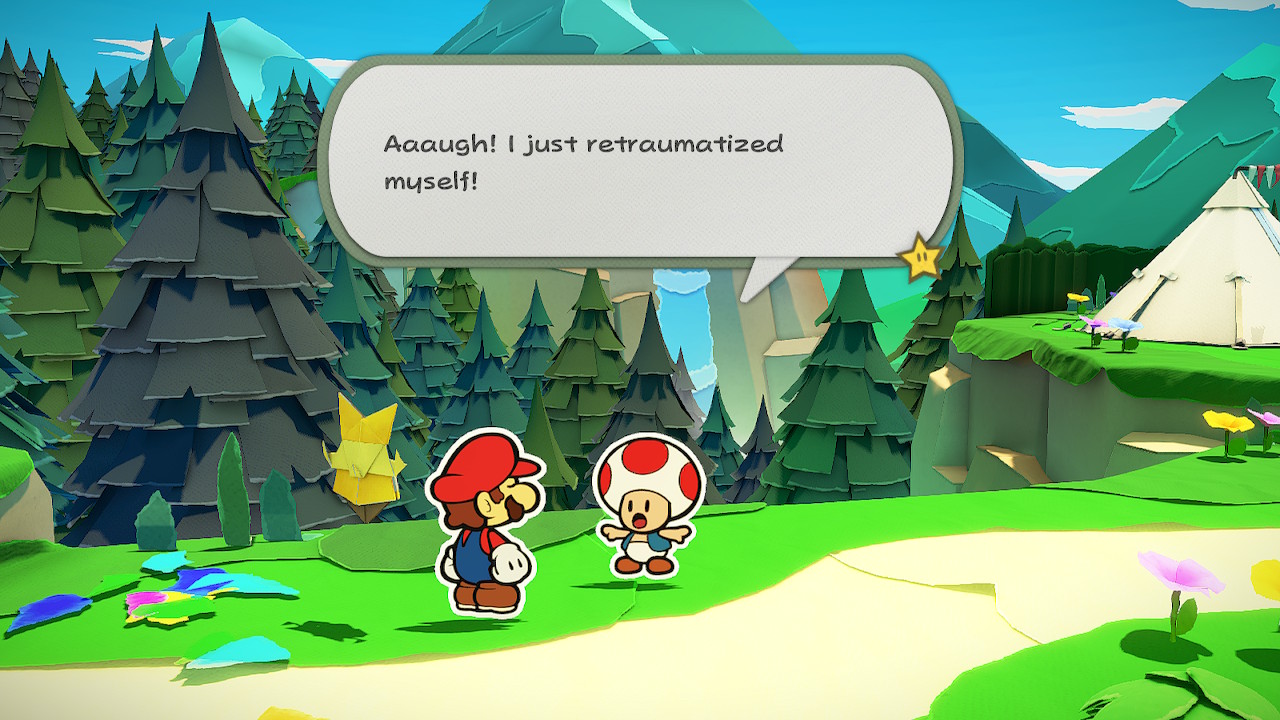
Origami King does not, as many of you were probably hoping, represent a reversion to the old traditional RPG formula of previous Papers Mario. What it does represent is a third attempt to refine this vision, and what I’ve played so far has been largely successful at finding the fun and providing challenge while being much kinder to the player.
There’s a nice balance to Origami King. At one point you might be in a dungeon heavy on turn-based battling, but then it’ll break up these segments with combat-free, action-based stretches, or mostly peaceful exploration, or wandering around solving puzzles and chatting with random denizens of the Mario universe. So while I’m going to devote a bit of column space to discussing the turn-based battle system below, you should know that this is just one of the many ways you’ll spend your time in Origami King.
Rather than simply arraying the characters in a straight line as in previous games, battles in Origami King take place in a ring of concentric circles, with Mario at the centre. Before you attack enemies, you have to rearrange the circles around you so that the enemies are lined up in a way that lets you attack multiple enemies at once. This could mean getting them into a straight line such that you can bounce across them with Mario’s jump attack, or getting four characters into a square so you can hit them all at once with Mario’s hammer.
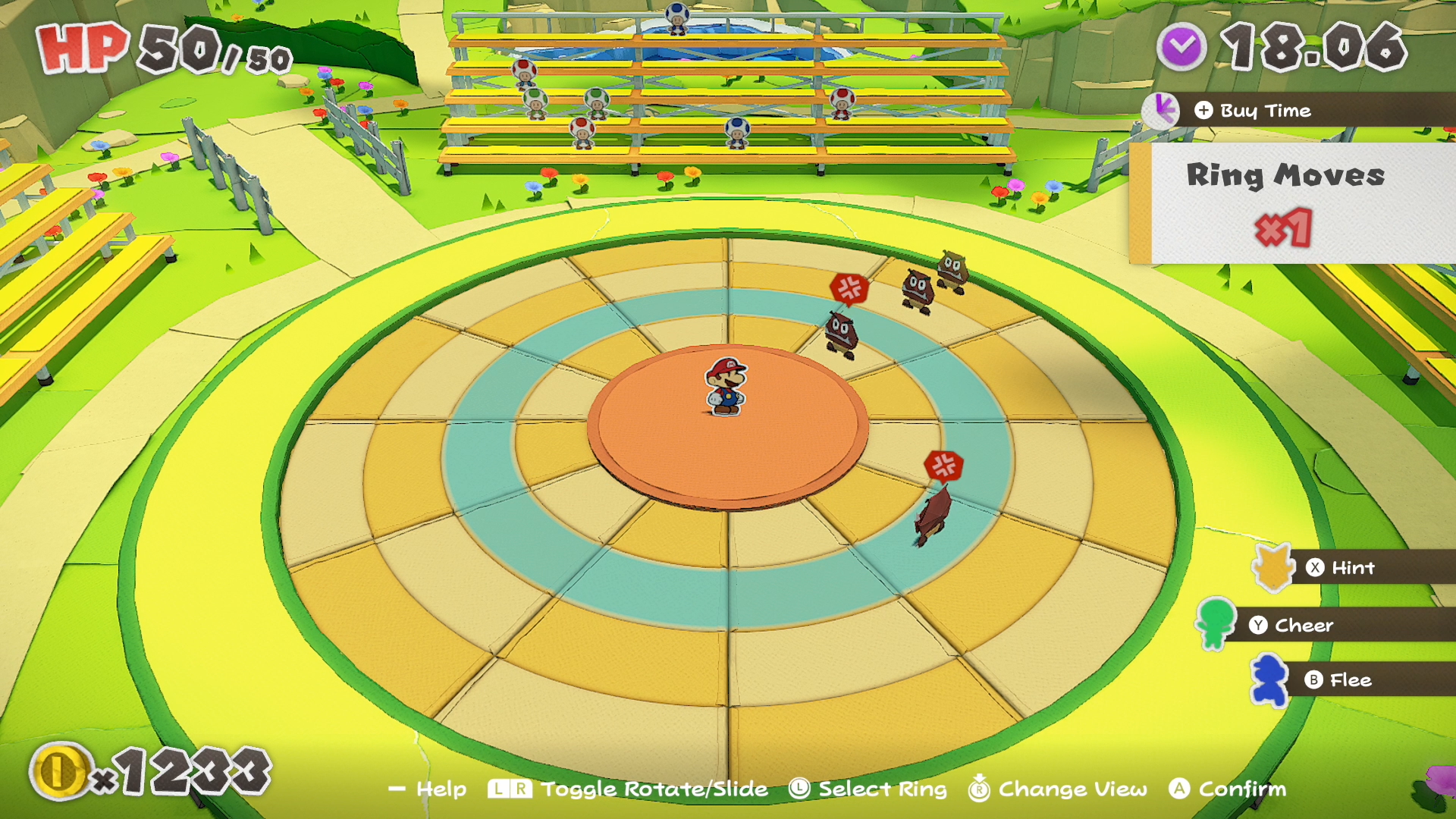
Clever! Now here’s the catch: You’re meant to be solving these puzzles perfectly each time. It’s not enough to simply get, say, three enemies into a line or a square. If you do this, you can still attack them, but your attack power will be significantly weakened and it’s unlikely you’ll defeat them in that turn, leaving you open for counterattacks.
There’s always a perfect solution to each puzzle, one that involves a perfect series of twists and turns of this virtual Rubik’s Cube that will cause several different enemy groups to perfectly align. Do this, and your attack power shoots up, meaning that you’ll likely be able to defeat all the enemies without losing any health. And this is doubly important because the only things battles give you are coins, and solving the puzzles perfectly without taking damage wins you a significant amount of bonus coins.
Basically, if you’re not solving the puzzles, you’re going to spend a longer time chipping away at enemies, lose a bunch of health, and come away from the slog with a smaller reward. So I hope you enjoy solving concentric-ring puzzles! Oh, and did I mention there’s a timer?
Like Sticker Star and Colour Splash, battles also make heavy use of consumable items. Fortunately, Origami King’s economy for these is much more generous. Mario always has his standard boots and hammer, which will never break. But you can find and buy nicer versions like Shiny Boots or a Flashy Hammer, which will do more damage. These will break after a certain number of uses, but they’re cheap to buy and you can load up your inventory with them. And, of course, since you get a big coin bonus for defeating enemies quickly without taking damage, the game incentivizes you to use those consumables so you can do more damage, get more money, and buy more weapons.
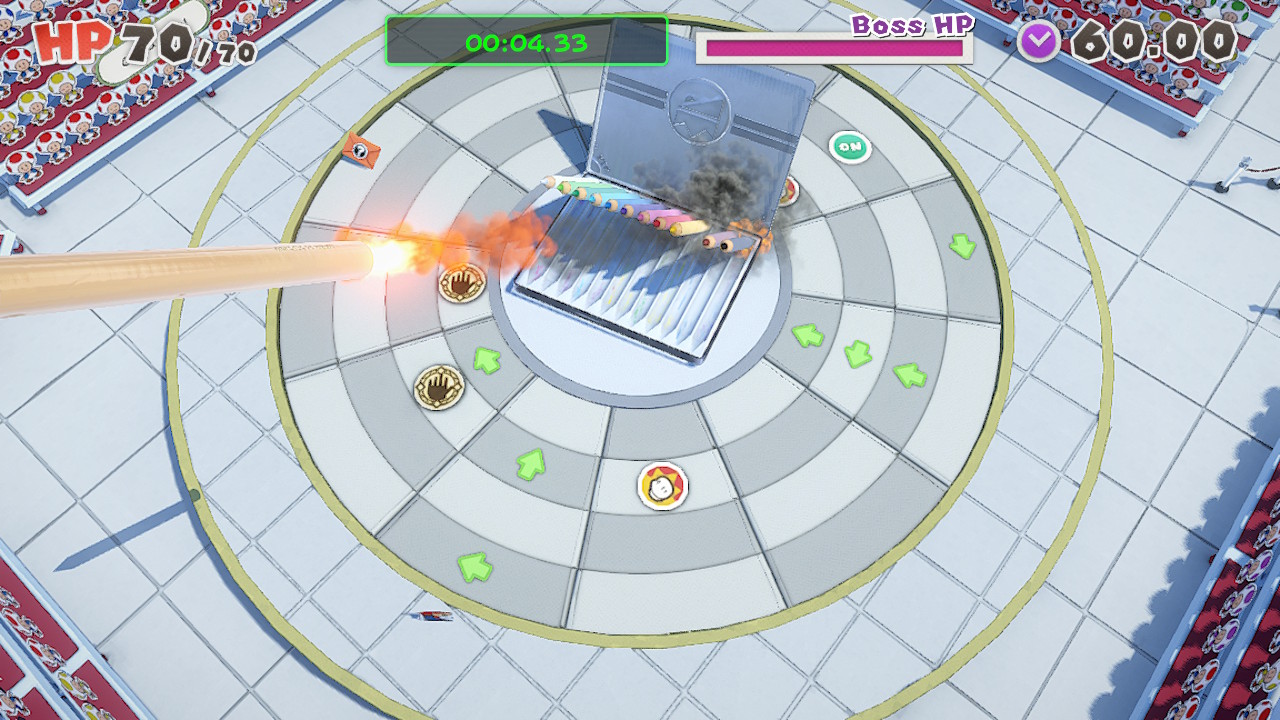
Boss battles flip the script. In these battles, it’s the boss at the centre of the rings and Mario on the outside. You have to rotate the circles, which now contain directional arrows, power-ups, and other items, to create a path for Mario to walk through, ideally ending on an action space that will let him attack the enemy. You’ll also need to use special attack squares to use some of Mario’s new origami-based powers to do serious damage. This is where some of the old Sticker Star jank comes in, as you’ve got to use the right move at the right time to do damage, but sometimes you don’t find out what the rules are until you try the wrong thing and fail, which could lead to you wasting a bunch of time and items.
In general, both types of battles are pretty fun. It is more interesting and satisfying to first have to solve these puzzles and create the perfect attack vector on each turn, whether against normal enemies or a big boss.
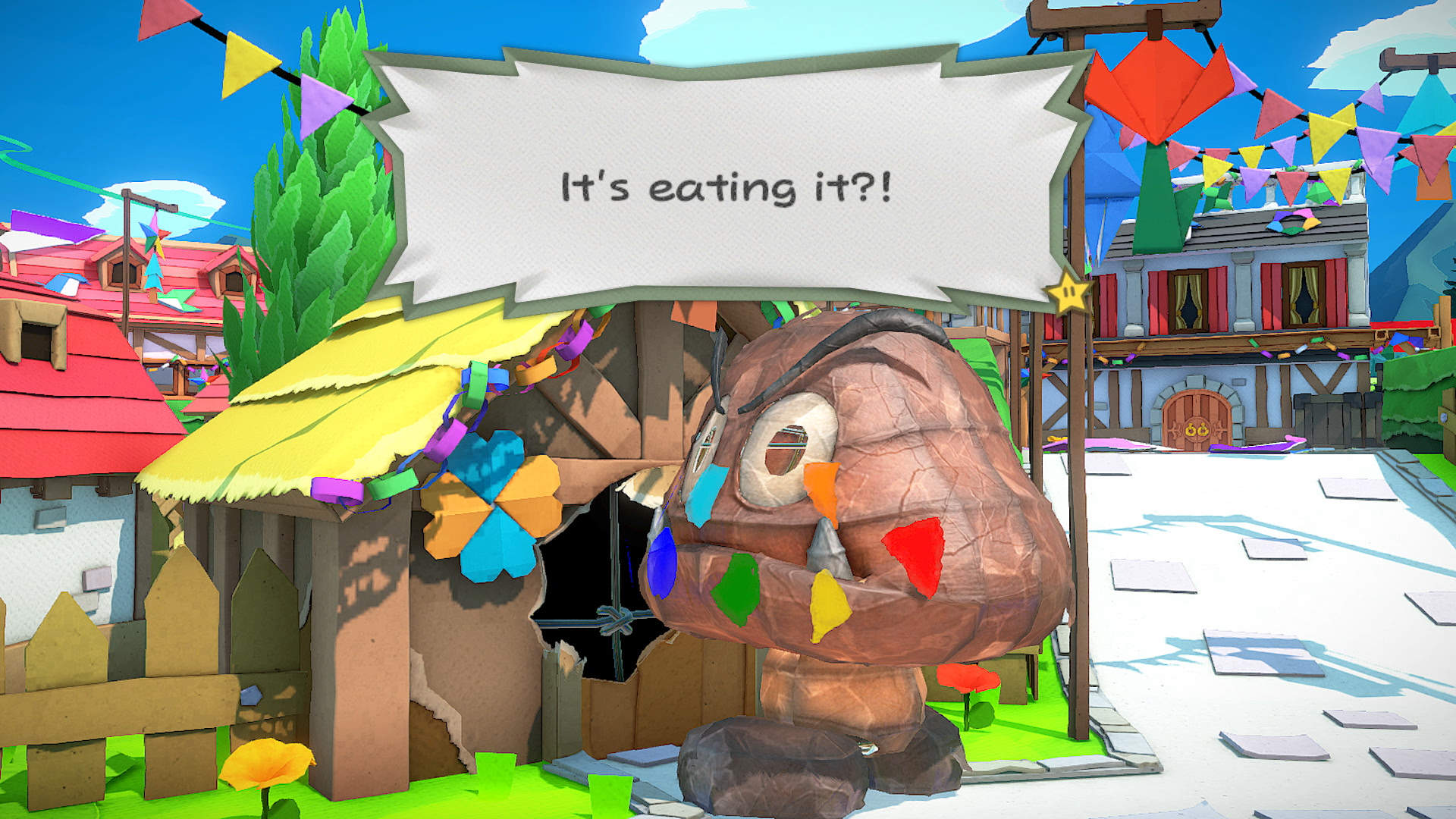
There’s even another type of enemy encounter, one that’s purely action-based. When you’re out in the field, you’ll encounter giant papier-mâché creatures known as “Paper Macho” enemies. You fight these in real-time, circling around to their backs to hit their weak points, then bashing them with the hammer until they explode in a shower of confetti. (Confetti is the other currency of Origami King; you collect it around the environment and use it to patch up holes in the paper world around you.) These battles, too, become more complex as the game goes on.
There’s lots more to discuss about Origami King, but I’ll want to wait for our full review next week to be able to really dig into the story, the characters, the mini-games, and all the rest. For now, I can say that while this certainly is not the return to the full-on RPG style for which fans of The Thousand-Year Door have been clamoring, neither does it seem to have the balance problems of the series’ other recent games. Has Nintendo finally cracked the formula? We’ll find out soon.
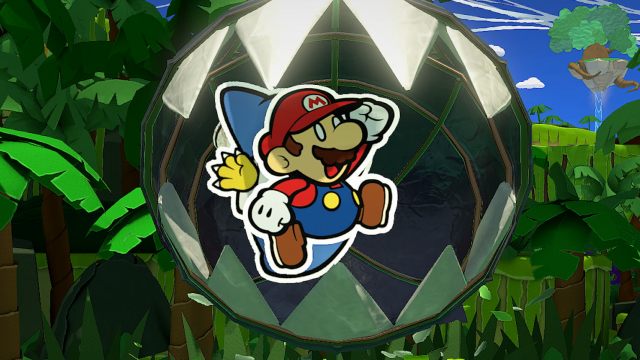
Leave a Reply